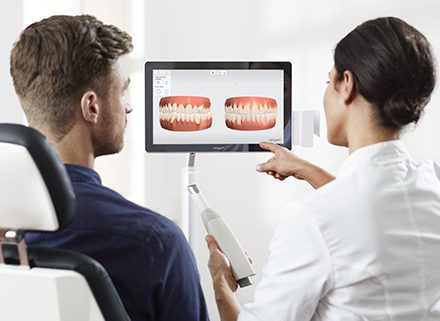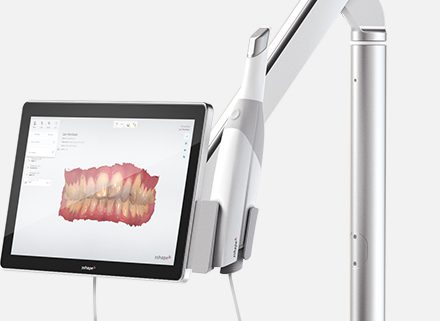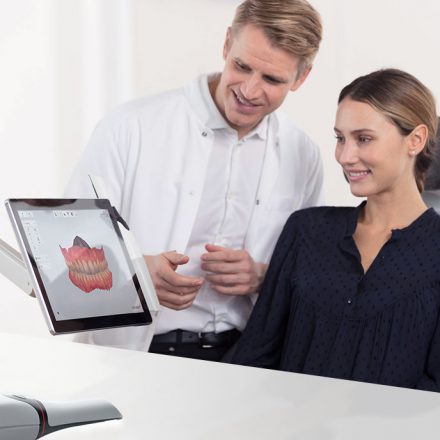Trios 3 Shape
IntraOral Scanner
An innovative wireless intraoral scanner.
The most advanced way to take impressions of the teeth.
In orthodontics and orthognathic surgery, the use of accurate models is an essential prerequisite for establishing suitable diagnosis and treatment planning, as well as for monitoring treatment progress.


What are Digital Impressions?
A digital impression is a digital scan that creates a precise map of your teeth and mouth, which allows you and your dentist to view your teeth on a computer screen.
The digital impression typically is captured using an intraoral wand that is inserted into the patient’s mouth and moved over the surface area of the tooth or teeth. It takes hundreds or thousands of pictures, and combines them into a 3D structure/model.
Most digital impression systems use a chairside monitor to display the impression image as it is captured.
They are minimally invasive and highly accurate.
A traditional dental impressions is taken by using a tray of pink goop which is inserted into your mouth and pressed firmly against the roof of your mouth.
Thankfully, taking digital dental impressions are far less invasive and doesn’t test your gag reflex. Also this is a solution for those who already feel anxiety when seeing the dentist.
Time
It takes approximately a minute and a half to capture a digital impression.

Staff and Training for Digital Impressions
Dentists and dental assistants may take digital impressions. Some training in the use of the equipment is necessary.
Benefits of Digital Impressions
Digital impressions provide many benefits for you including the following:
- The 3-D scanning is much more comfortable, less anxious experience for patients and the dental team. Those who have sensitive gag reflexes from having goop in the mouth or teeth that are sensitive to cold material will be able to relax since the impression is all-digital.
- Improved image/impression quality that limits the margin of error and distortion compared to conventional impressions.
- Less chair time
- No need for distasteful impression materials that cause some patients to gag
- Patients tend to appreciate the new technology and state-of-the-art dental care, so they become more engaged in, and better informed about, the treatment process because they can see their impressions on-screen chairside.
- The digital impression can be stored electronically indefinitely, which saves space, contributes to efficient recordkeeping, and supports a paper-free environment.
- Make it possible for dentists to e-mail the virtual impression to the laboratory, rather than send a traditional impression or stone model via regular mail.
- Green dentistry and eco-friendly aspects include eliminating the need for disposable plastic trays and impression materials, which otherwise would be polluting landfill space.

